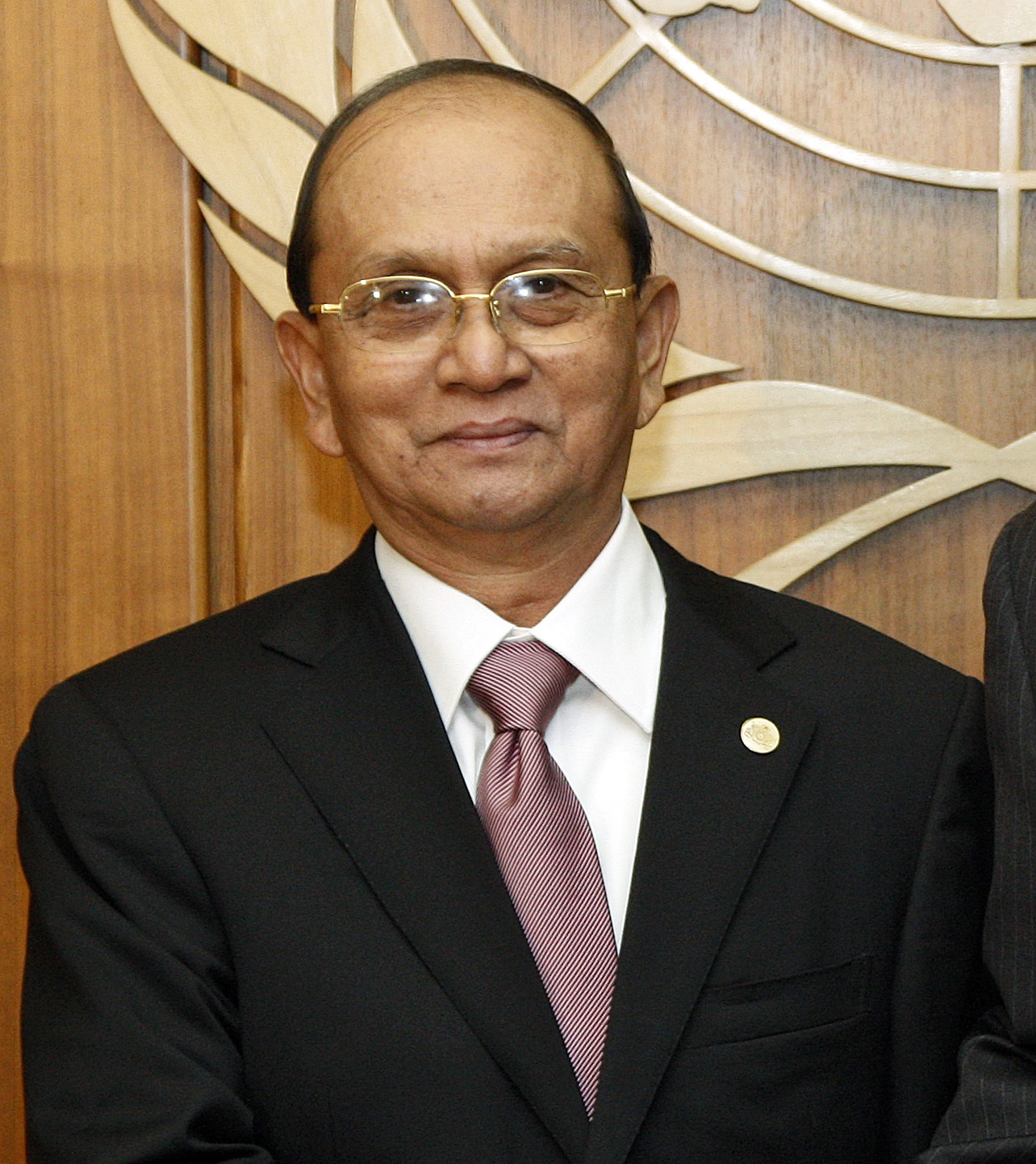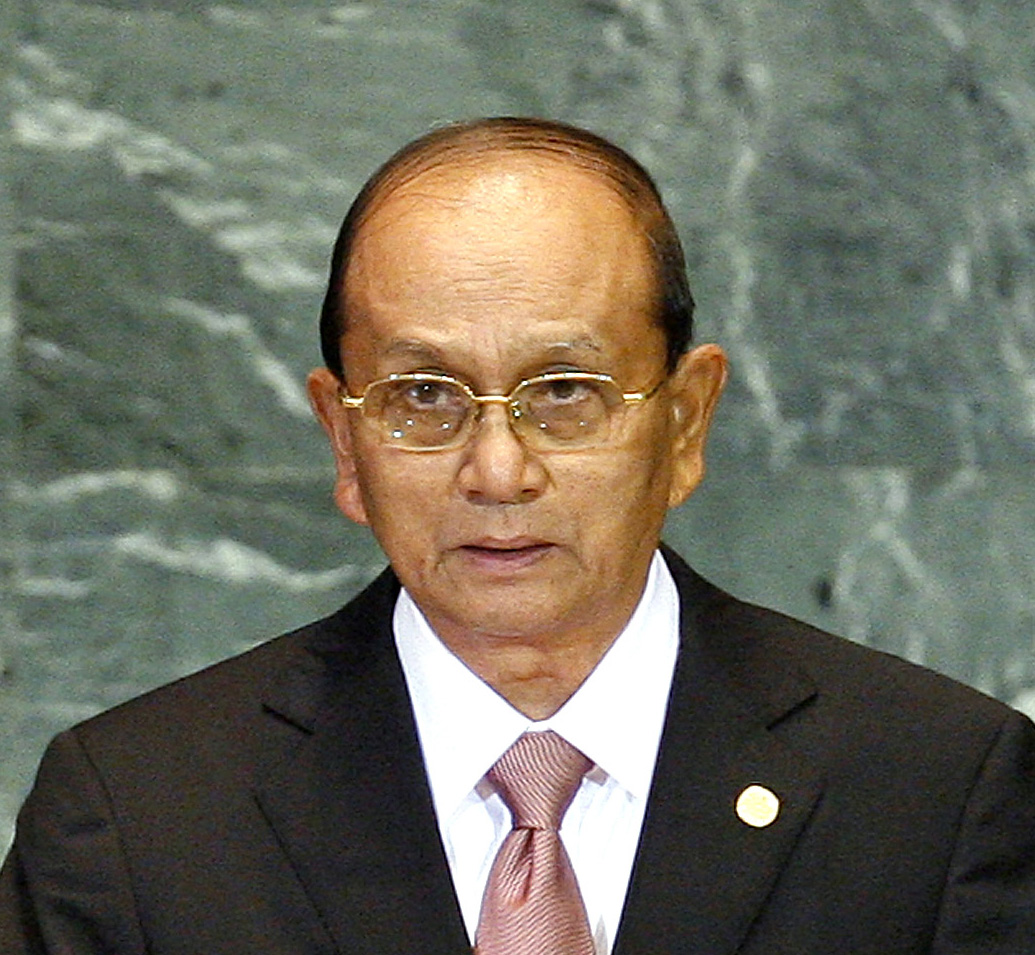Official Stats
- Official Title: President
- Government: In transition from Military Dictatorship?
- Years Left in Office: till 2016; re-election possible
- Political Classification: Center-right
- Education: unknown
- Age: 80 (born April 20, 1945)
Thein Sein Facts and Information
Important Points
- Thein Sein is the first civilian president of Burma since it became a military dictatorship.
- Thein Sein has a military background, but retired to focus on his political career.
- Thein Sein is a center-right, reformist leader trying to instill democracy into Burma.
- Thein Sein has released more than 6,300 political prisoners that were sentenced by the military dictatorship.
- While in office, Thein Sein has removed numerous sanctions that were put upon Burma and has greatly improved their global relations as a whole.
The Rundown
Serving as the current president since February 2011, Thein Sein is like the custodian trying to clean the mess that has been a Burma (otherwise known as Myanmar) for about the past 50 years. Although he has a military background, Thein Sein is the first civilian leader of Burma since it became a military dictatorship in 1962. He has been labeled as a moderate, reformist leader especially in comparison to his recent predecessors. Through improving global relations and supporting a more democratic approach to government, Thein Sein has already brought about drastic changes to Burma.
He was born on April 20th, 1945 by his father Maung Phyo, who was a Buddhist monk, and his mother Khin Nyut. He attended and graduated from the Defense Services Academy in 1968 with a Bachelor of Arts degree. Shortly after graduating, he began his military career as a bureaucrat. Starting as a second lieutenant, he moved quickly moved through the ranks of the military ladder.
Thein Sein’s political career began as he joined the State Peace and Development Council in 1997. About 7 years later, he began serving as the council’s secretary. Swiftly gaining the respect and recognition from his country, he was appointed as the interim prime minister of Burma only 3 years later in 2007. Soe Win, the prime minister at the time, was being treated for leukemia in which he never recovered. Thus, making Thein Sein the permanent prime minister. On April 29th 2011, he retired from the military in order to lead the Union Solidarity and Development Party as a civilian. Only a year later in a controversial election where he was accused of tweaking it with irregularities, he was elected president and sworn in 2 months later.
In order to completely understand the political career of Thein Sein, it is important to understand Burma’s history. Burma became a republic in 1948 and within 15 years, the military overthrew the civilian government and it became a dictatorship.
As you can imagine, not everybody was okay with the military trying to run the show and pro-democracy protests started to flare up. One notable protest occurred on August 8th, 1988 (also known as the 8-8-88 uprising). On this infamous day, democratic activists were killed and repressed by the military junta. One female pro-democracy advocate, named Aung San Suu Kyi, became the figurehead for the movement as she created the National League of Democracy shortly after the crisis.
In response to the continuous uprising, the military junta held a general election in 1990 where Suu Kyi’s party won 90 percent of the vote. The junta immediately nullified the results and reclaimed total control of power. The military went as far as to putting Aung San Suu Kyi on house arrest for the next 15 years in order to try and diminish the democratic efforts.
During this reign of military dictatorship, Burma was characterized by a weak civilian society and a fear for national integration and foreign intervention. Many countries interactions with Burma squandered and there was even economic sanctions placed on Burma by many countries, including the US. In 1989, the junta announced the official change of the name of Burma, to Myanmar (which the US still refuses to recognize).
Now back to Thein Sein, where we left off with him leaving the military and winning presidency. In his time in office, he has made pretty extravagant changes and decisions. Some of which are supported and some of which are controversial by the democratic activists.
Some of his less favorable policies include attempting to resettle the minority of Burma, the Rohingya, to a different country. He also tried to pass legislature that prosed to view the Rohingya as non-citizens. Sein was prime minister during one of Burma’s worst natural disasters, Cyclone Nargis, on May 2, 2008. The importance of this disaster was that he spent 90% of Burma’s effort trying to hide the damage and the other 10% trying to keep international aid workers out.
Regardless, Thein Sein has become a well-known and special leader not only in the Eastern Asian countries, but in the world. One of his first moves in office was the reshuffle almost his whole cabinet to try and consolidate the authority. He has managed to deregulate the country’s censored media. With some outside pressure, he has released more than 6,300 political prisoners including Aung San Suu Kyi.
Improving relations and increasing trade ties by making international tours, has been Thein Sein’s specialty. Before he took office, Burma was considered one of the most isolated countries in Asia. Granted, Burma is no social butterfly yet, but he has certainly done his share to ease the tension. If Thein Sein continues to help his country slowly embrace democracy, then he might become known as the man who turned Burma around and reintroduced it to the world.
Photos
Plaidcasts Involving this Leader
- Battle of the Pacific Blocks has Begun!!!! Nov 21, 2012
- Tsunami of Change Hitting Burma! Apr 21, 2012
Translate This Page


